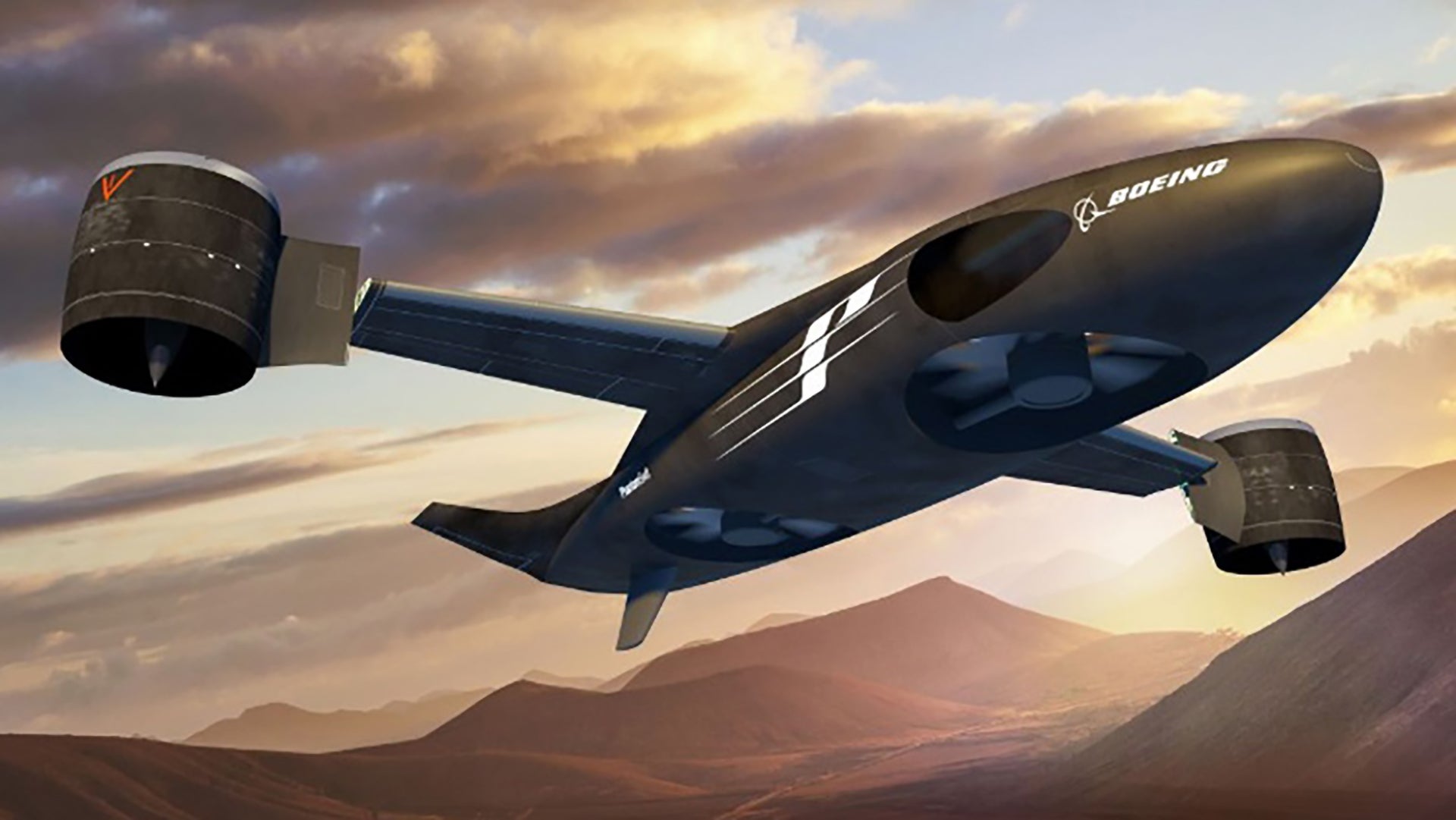Our minds have been racing since Boeing Defense posted a tweet on Thursday showing a black cloth draped mystery aircraft with the text “Robust? Check. Ready? Check. Changing future air power? Check it out! See the reveal 12/19! #PhantomWorks.” We followed up quickly with a post detailing some possibilities as to what’s under that black sheet, but a discussion in our forum prompted me to look up a research and development project I hadn’t heard about for some time—the vertical takeoff and landing (VTOL) “Phantom Swift.”
Phantom Swift is indeed a Boeing Phantom Works program that was being developed for the Defense Advanced Research Projects Agency (DARPA) under the VTOL X-Plane competition.
In 2013, this is how Boeing described the endeavor:
“The Defense Advanced Research Projects Agency (DARPA) is looking for a vertical takeoff and landing (VTOL) aircraft that can fly fast, hover efficiently and carry a lot of cargo. Thanks to rapid prototyping, a team of Boeing Phantom Works engineers in Philadelphia designed and built a flying subscale model of the innovative Phantom Swift in time to be part of Boeing’s proposal for DARPA’s vertical takeoff and landing X-Plane competition.”

The design leverages two large fans buried in the aircraft’s fuselage to provide vertical lift and a pair of swiveling wingtip fans for stability and control during hover and for propulsion during forward flight. The idea is to have one or two General Electric CT7-8 turbines produce power to drive all these fans electrically, although an early prototype might not include a full hybrid electric drive system. Boeing says this configuration is far more efficient than a normal helicopter and DARPA’s original design goals included hitting speeds beyond 300 knots and carry 4,000lbs. A full size Phantom Swift would be similar in dimensions and weight to a Super King Air.
Boeing continued to develop the aircraft with government funds prior to DARPA’s down-select of just one type back in early 2016. That aircraft ended up being Aurora Flight Sciences exotic and highly promising LightningStrike concept. I wrote the following about the program shortly after Aurora Flight Sciences won the chance to build a full-scale prototype:
“The idea behind the whole VTOL X-plane initiative is not to put an aircraft into production or to fill a distinct mission set, but to rapidly mature and reduce risk on a package of technologies that could make their way to production aircraft in the not so distant future. And according to Bagai the technology is scalable, both up to much larger aircraft and down to small unmanned system. Clearly the tactical and commercial applications for a LightningStrike craft, that can land virtually anywhere while also being able to fly a near jet speeds are huge.”
Just last October Boeing acquired Aurora Flight Sciences, which had already completed sub-scale testing on LightningStrike and is currently working to build the full-sized version of the concept known as the XV-24A. But it is possible that even though Phantom Swift originally lost the DARPA X-Plane competition, Boeing may have continued to internally fund development of the design on a parallel timetable as DARPA’s program.
Boeing has done this before with their X-45C Phantom Ray UCAV, among other initiatives, and clearly rotorless VTOL flight—especially using hybrid gas-electric propulsion—is one of the most promising future of flight technologies. With that in mind, having two radically different designs now in development within the company’s portfolio could drastically increase the potential of grabbing marketshare early on and would abate some risk if one of the two concepts doesn’t pan out during testing. Also, it’s likely that one design will be better suited for certain tasks than the other an vice-versa.
As you can see in the tweeted image above, the latest known configuration of the Phantom Swift, sure resembles what’s poking up under Boeing’s black sheet. With the top inlet doors closed the form factor of its fuselage looks pretty similar and the V-tails being as thick as they are, the aircraft’s wings could be entirely blocked in the teaser video. As for the stout landing gear, well VTOL is a rough and tough business.
The applications of a full-sized operational Phantom Swift are nearly endless, and the DoD is already spending big bucks trying to get similar technology operational on the high seas and over land.
This isn’t to say that this is a definitive dead-ringer for what’s shown in the teaser video, but it does check a lot of boxes and would definitely be worth the hype that the Phantom Works is putting on the unveil. Still, it could end up being a totally new concept, Boeing’s entrant into the Navy’s CBARS tanker competition, or a whole host of other possibilities.
If Boeing self-funded a full scale Phantom Swift and still bought Aurora Flight Sciences it would be abundantly clear that the company is going all-in on the future of VTOL flight that doesn’t include big, exposed, whirling rotors, and the limitations that go along with them.
Boeing will unveil their mystery aircraft on December 19th.
Contact the author: Tyler@thedrive.com
